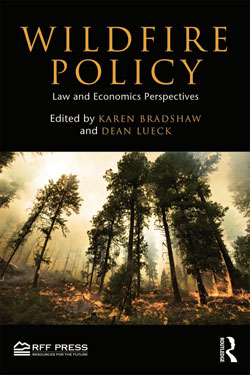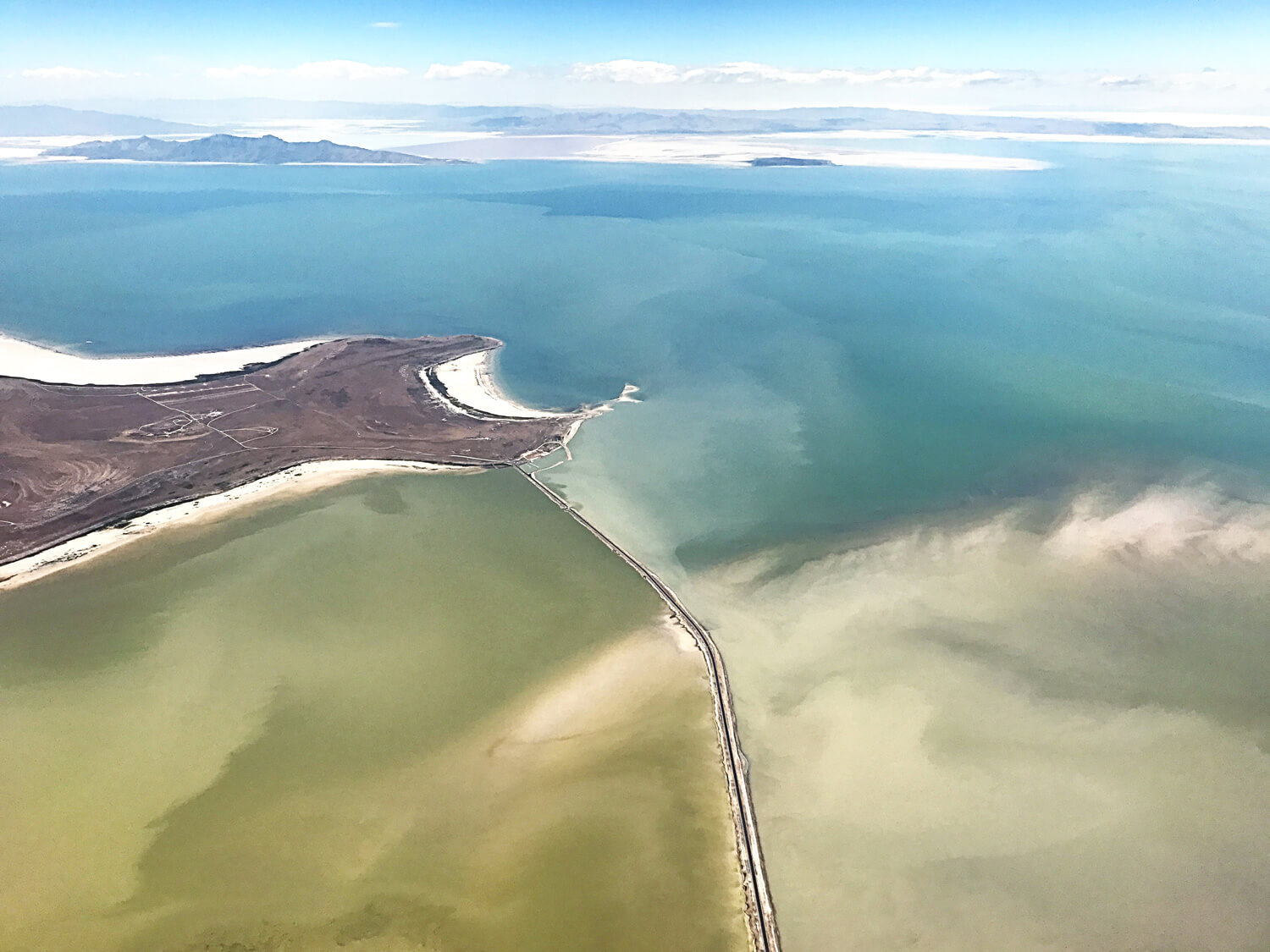
Dean Lueck knows wildfires better than most. Before becoming an economist he was a smokejumper with the U.S. Forest Service in McCall, Idaho. Recently, Lueck combined his hands-on experience fighting fires with his impressive academic career studying property rights and natural resource economics. The result was Wildfire Policy: Law and Economics Perspectives, a volume he co-edited with Karen Bradshaw. This summer, Lueck is continuing his research on wildfire policy at PERC, along with Jonathan Yoder, as a 2012 PERC Lone Mountain Fellow.
Q: Can you highlight a few examples of major wildfires and what efforts were taken toward suppression?
A: First, there is the famous 1910 “Big Burn” in northern Idaho and western Montana. That fire, or actually a collection of fires, burned about 3 million acres, killed over 80 people, and devastated the town of Wallace, Idaho. It was fought in a disorganized manner by unskilled firefighters including convicts, vagrants, U.S. Army soldiers, timber land owners with only hand tools. Because the fire took place predominantly on national forest lands, it led to dramatic changes in federal fire policy. Also during the period between 1880-1920, there were many fires as large or larger than the Great 1910 Burn. Many of these took place in the northeast and the Great Lakes region where private timber land dominated.
In general organized wildfire suppression efforts were very limited prior to 1900 and efforts focused primarily on protecting homes, buildings, and towns, but not on putting out the fire itself. By the late 20th century fire suppression had become organized within a large centralized, coordinated and hierarchical system heavily dominated by the U.S. Forest Service. Crews had become specialized and highly mobile. The use of aircraft in transport and direct suppression with water and retardant had become routine.
More recently, the Biscuit Fire in Oregon burned nearly a half a million acres in 2002. It began on July 13, and at its zenith on July 31 there were over 2,000 firefighting personnel, 21 helicopters and 40 bulldozers assigned to the fire. The fire was not completely suppressed until December and cost more than $150 million. The fire destroyed four homes and ten other structures, forced the evacuation of 15,000 people, and destroyed or damaged thousands of acres of valuable timber. No one was killed during the suppression effort.
By contrast consider the Black Dragon Fire in 1987, which burned 18 million acres along the Amur River, which is the border between China and Russia. The fire started in China and burned 3 million acres there. The Chinese fielded over 60,000 unskilled fire fighters and hundreds died. The Russians did essentially nothing to suppress the fire, and it grew an additional 15 million acres. The disparate approaches resulted from a lack of cooperation between Russia and China and extreme differences in the relative value of timber in the two countries.
Since 1999 there have been 134 fires of more than 100,000 acres in the United States. For the last 10 years, average annual federal suppression expenditures have been over $1 billion.
Q: What does your project (with Jonathan Yoder) seek to add to the economics of wildfire policy?
A: The main goal of our project is to gain an economic understanding of the organization of wildfire suppression. Fire suppression organization today seems complex, administratively cumbersome, and often inefficient. We want to understand the causes and consequences of the current system both theoretically and empirically. We want to understand the economic foundations that have driven how fire suppression institutions developed into those that we see today, and understand how they vary across environmental, demographic, and political jurisdictions. We will then have a better foundation for understanding where inefficiencies lie, and how suppression institutions might be improved.
So, for example, we are examining the emergence of wildfire suppression among timber landowners in the northwestern and northeastern United States during the late 1800s. These private organizations pre-date the Forest Service fire crews, and this type of timberland owner association, to our knowledge, is pre-dated only by urban firefighting organizations. The federal government’s involvement in fire suppression emerged with the accumulation of federal forest lands and even stimulated expansion of the national forest system.
Q: What are some of the criticisms of modern wildfire institutions? Do the resource values justify the suppression costs?
A: Many critical observers feel there is an excessive amount of suppression and too little fuel management or prescribed burning, especially on federal lands. There is also the concern that suppression costs may often outweigh benefits (damage reduction). We certainly know of specific cases in which suppression costs exceeded the resource value at risk. There is also a concern that suppression effectiveness is often low so that suppression expenditures have little payoff. At the same time there is strong political pressure to put out all fires so there has been a recent reversion back to the so-called “10am rule” in which fire crews and land managers are directed to put all effort into suppression even where suppression costs would be high relative to potential damages. The long-term effects of continued fire suppression are also likely to lead to fuel buildups that can result in larger, more devastating fires in the future.
There are also incentive problems with the fires bosses, or Incident Commanders as they are now called. For example, there are incentives for ICs to use too many resources since they do not face the full marginal costs of resources. Also, ICs also do not face liability for wasteful or destructive actions, such as backfires that escape and burn homes or valuable timber.
An additional complication in fire suppression incentives is the fact that large areas of fire-prone lands in the west are in federal hands and thus governed by administrative agencies. These agencies are subject to political pressures generally and constraints (e.g., NEPA, NFMA) that create weak incentives for land management and fire management.
Q: What are the unique features of wildfires that make them complicated assets to manage?

Another unique feature of wildfires is that they also can grow rapidly in the right (or wrong) conditions so that preparedness and rapid response are the keys to effective (and cost-effective) suppression. Because of the importance of this timeliness in suppression, the optimal management of wildfire requires upfront investment to pre-position assets (e.g., crews, equipment) and often military-style (or rule-driven) organization to move quickly.
Q: What conclusions did you and Yoder reach regarding the structure of wildfire suppression institutions?
A: Our research project is its preliminary stages but there are some things we can say now and hope to understand better later on. First, we observe that organized wildfire suppression – distinct from light burning or the protection of valuable assets – is a relatively recent phenomenon for rural lands, dating back only 100 years or so. The costs of suppression relative to the value of wildlands was simply too high. Organized fire suppression began when timber companies organized to protect their valuable timber assets. Similarly, the U.S. Forest Service grew into a fire organization after it accumulated vast areas of land in the West and, after the 1910 fires, sparked a policy debate that resulted in an aggressive suppression strategy.
Second, there are strong economic foundations for public suppression, and even active federal involvement. The large scale of federal land ownership is one reason and the gains from creating a network of specialized assets that can be available across very large regions. At the same time, however, it seems clear there are potentially big gains from improving incentives within the structure of current suppression organizations. By studying how fire suppression has evolved across time and space, and what the effects of different organizations are, we hope to be able to address the big questions of overall suppression efficiency and reform.


